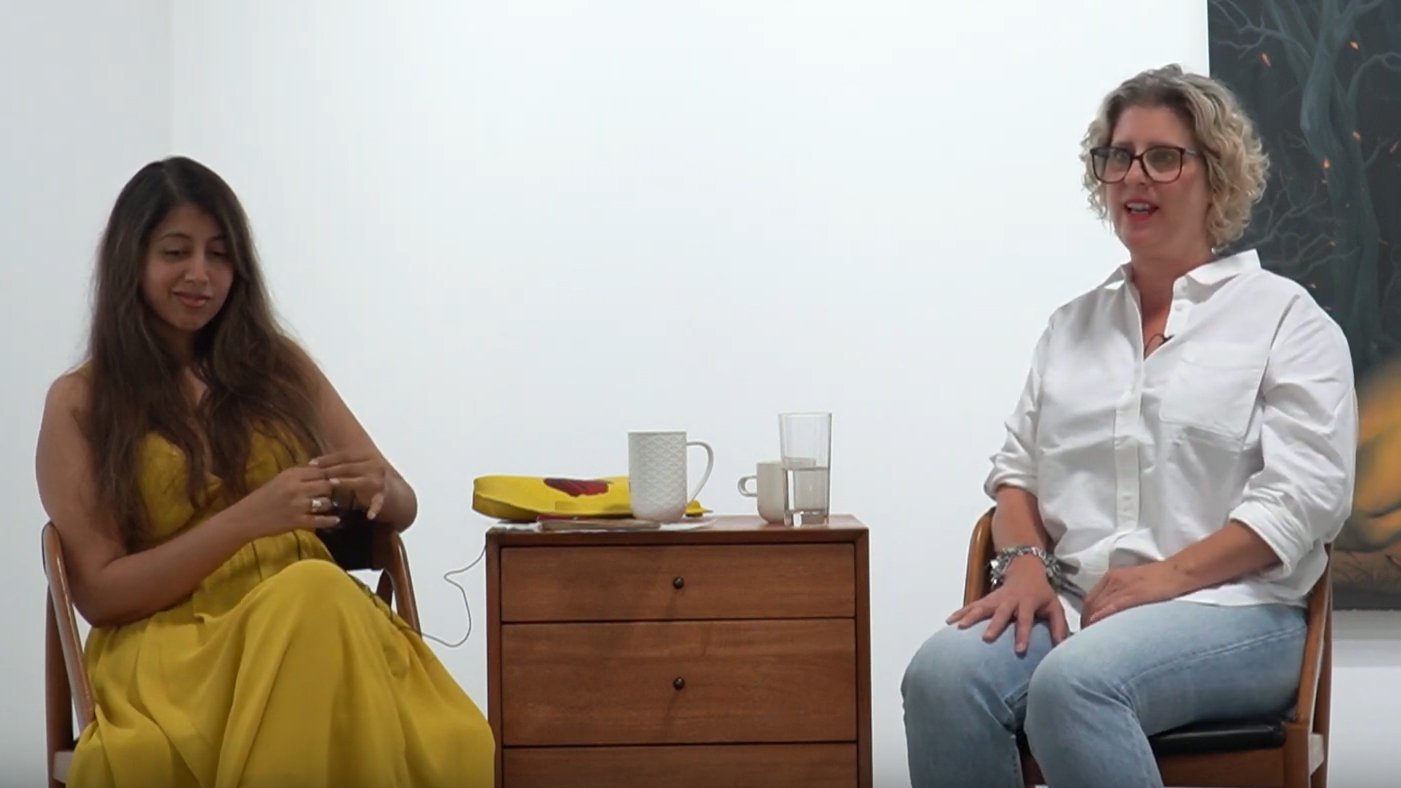Oli Epp and Mollie E Barnes
INTERVIEW
Published Dec 14, 2023
We spoke with curators Oli Epp and Mollie E Barnes.
How do you see the dialogue between artist and viewer in this exhibition, and what discussions or revelations do you hope viewers will take away after?
Fundamentally, we love the idea of visitors discovering artists they didn’t know before walking in the door.
In terms of the curatorial themes, we hope viewers walk away with a desire to question if what they see is ‘true’.
———————
How does the exhibition contribute to conversations about the intersection of art and technology in the digital age?
There’s an inspiring quote from Jacques Lacan: “In this matter of the visible, everything is a trap.’ This was a grounding to the exhibition.
Today, with AI surging, the influx of content bombarding us, and meme culture, artworks exploring the online were vital.
We understood that there’s a feeling of sublime to both deception and illusion. Magic tricks exist on this principle. But there is a real darkness too: fake news, hackers, clickbait, trolls, conspiracy, propaganda.
Artists like Emma Stern and Maja Djordjevic dissect the digital. They require us to understand our susceptibility to be allured by fabricated realities.
———————
Many works draw on American mythology and cultural symbols. How did you balance these references for universal appeal?
In this exploration of perception, it’s fun to include universally recognised motifs. These references provide a jumping off point - a place to dive from into the portal. This ranged from internet memes in Al Freeman’s ‘Comparisons’, to domestic visuals of Nick Doyle’s socket piece.
We liked the reference to our shared mortality in Paa Joe’s coffin sculptures.
Many of the works also play into the American context in this collaboration, including the staple vocabulary of denim, and quintessentially American brands.
———————
Oli, to what extent do you see this exhibition as an extension of your own work, in which digital culture and social media have been recurring themes?
While curating isn’t a direct extension of my painting to me, it is a part of the wider ethos of my working practice: of enabling artmaking and encouraging dialogue. Group exhibitions are a great opportunity to do this. In fact, so many of the artists had relationships with each other – and us – already. Mollie and I run a residency in East London called PLOP, where Emma, Rosie and Noku have all spent time.
———————
Do you have any stories around discovering the exhibiting artists?
Oli: I had seen Michael Ross’s work in Mexico at Galeria Mascota a few years back. It was special to bring his little kingdoms into this exhibition. Curated beside larger works, they really play to the micro/ macro element of this exhibition that has been interesting to play with – drawing you in and out of perceived reality.
———————
Is there a work in the show that entices you in particular?
It could be Rafa’s psychedelic revolving door (made specifically for the exhibition). That piece changes every time I see it. Sometimes I’m really enticed by the possibilities of the liminal space through the portal, following the red smoke… Other times it speaks to me as hazardous…a state of emergency. I am wary and want to keep back. It’s the intrigue of possibilities vs. the unknown.
———————
If you had the opportunity to curate an additional piece into the exhibition by any artist, living or dead, who would it be?
A piece by Peter Halley.
———————
If you could transport one piece from the exhibition to any historical art period or movement, which artwork would it be?
Willie Cole’s two works really do feel like part of the past and the future. However, I also have a funny vision of showcasing Christopher Page’s in a Blackadder-esque Elizabethan court. It might appear like witchcraft.




